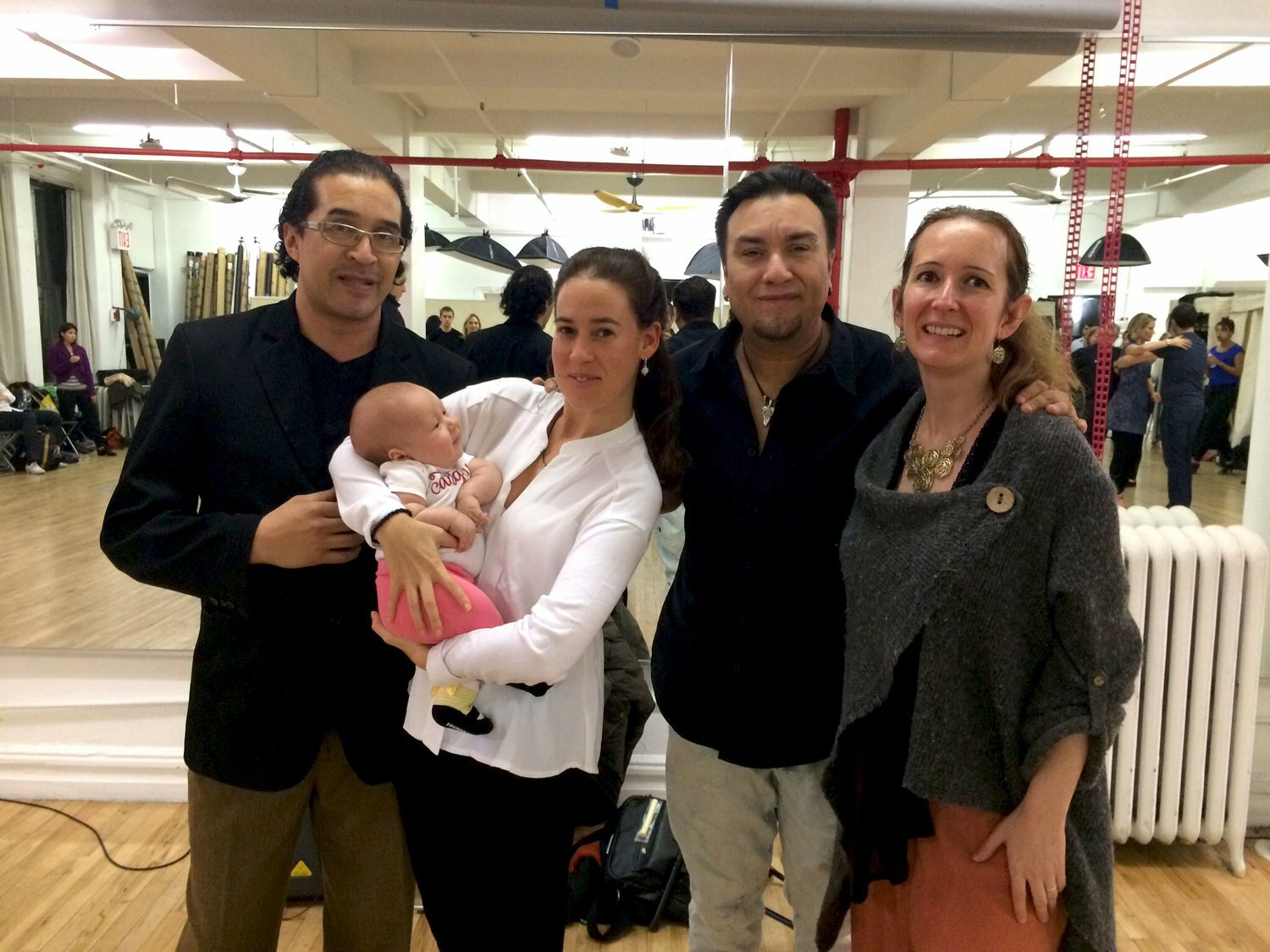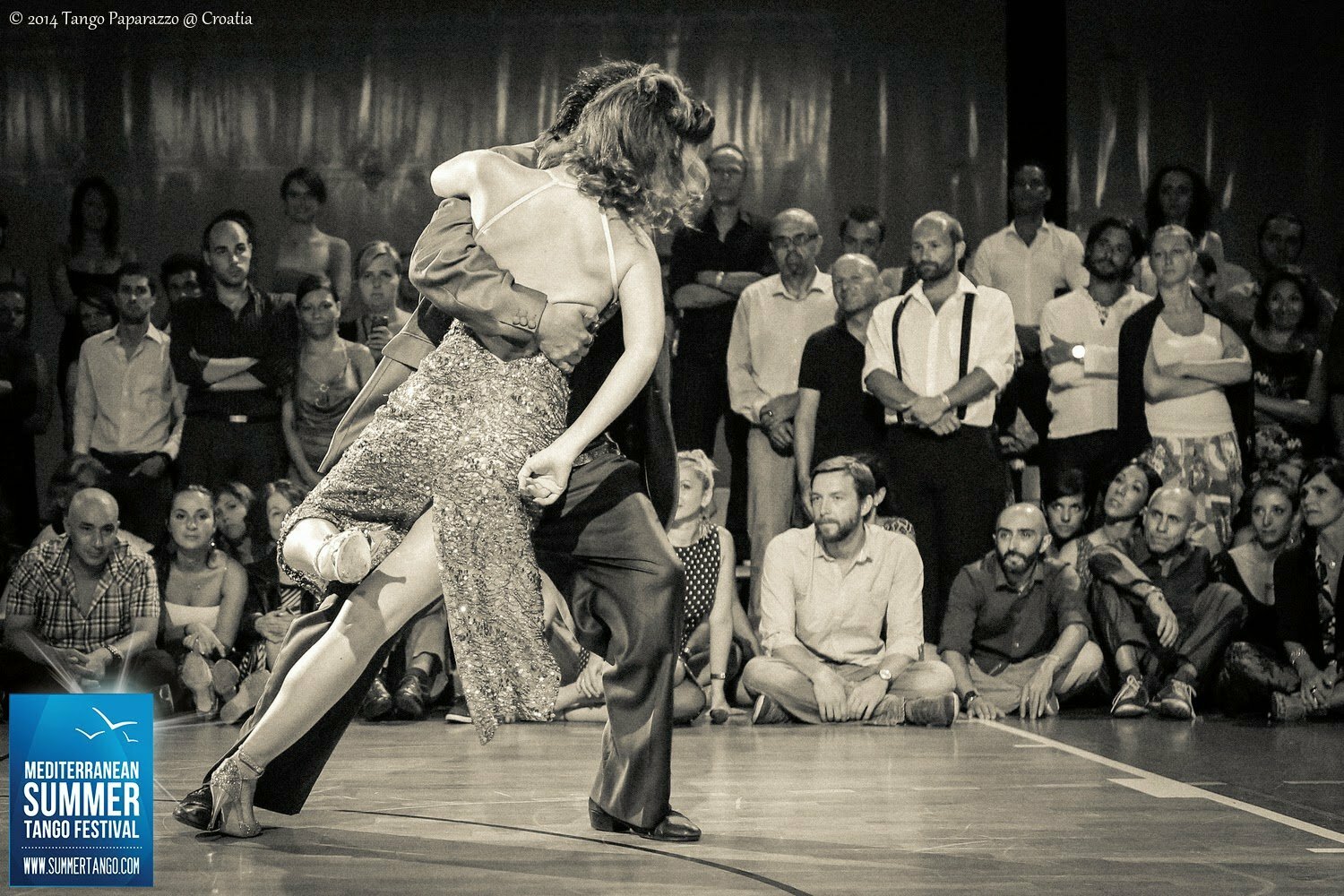In the 1990s, the Tango Investigation Group, later known as Cosmotango, began research into the development of the Tango Nuevo movement.
Tango Nuevo did not start as a dance; rather, it began with Astor Piazolla, who, according to the Heritage Institute, “was at the forefront of this development when he incorporated elements of jazz and classical music into traditional Argentinian Tango music.” Following Piazolla’s creation of Tango Nuevo music, Tango Nuevo as a dance was later developed.

When one encounters discussions regarding Tango Nuevo, one will often chance upon a slight inconsistency about the key individuals cited as the so-called founders of Tango Nuevo. In some available materials, only Gustavo Naveira and Fabian Salas are credited as the two primary individuals responsible for developing the Tango Nuevo movement.
However, unbeknownst to many, Tango Nuevo could not have been as successful without the significant contributions of Mariano “Chicho” Frúmboli.
Frúmboli and Tango Nuevo

In his interview with Dance of the Heart, Gustavo Naveira himself acknowledges Chicho Frúmboli’s importance in the development of Tango Nuevo as a process that aims to have an increased awareness of the techniques and structural understanding of tango as a whole. Around the time Naveira met Frúmboli, Naveira and Salas were already making headway into researching and conceptualizing Tango Nuevo. Naveira recounts in the interview:
“But, with Chicho, around this time, with only six months of study, he was amazing as a tango dancer. After that, I think
he left acting, music, and everything else. He became so obsessed with the tango
— I will always remember one day, in my studio, he looked at me very seriously and said, ‘Gustavo, what are we going to do with this!?
This is such an amazing way of making art, we must do something really great with this, something HUGE!!!’
And he got very excited, very crazy in telling me this, and, well, in that moment our story really began.
“Chicho was absolutely the best dancer I ever saw.
He started working with us — with Fabian and me — and we said, ‘Well, we have to get him to really join us in this work, or else we have to break his legs!’
He did crazy things no one else could do!”
Perhaps one reason that contributed to Frúmboli’s seemingly less prominent participation in Tango Nuevo was that Naveira and Salas had simply traveled more, and Frúmboli chose to hone his craft alone.
In his interview with Milena Plebs, an English translation of which can be found in Brisbane House of Tango, Frúmboli explains: “Gustavo and Fabian often traveled abroad to teach, while I stayed behind with all of this information, practicing, and waiting for them to return in order to know where to go with all of this new information that was changing my dance.”
“For me, my work with the dance became a very solitary practice.”
But this doesn’t diminish Frúmboli’s significant contributions to the development of Tango Nuevo as he eventually traveled to Europe himself and began teaching a new generation of tango dancers, which he continues up to this day.
However, there remained many critics who seemed to misunderstand what Tango Nuevo’s objectives were. A document published by the Maral and Mariano Argentine Tango School, titled “New Tango, A Brief Overview,” (DOWNLOAD HERE) offers an explanation as to the criticisms received by what is supposedly a process for studying tango, not a new style of dancing:
“One of the main reasons that ‘tango nuevo’ has had its share of bad press in recent years has been because people who have not yet developed an understanding of the essence of tango, or developed their skills enough to control their movements have nevertheless taken to the dance floor trying to do ambitious or inappropriate movement with little connection to the music, the limitations of the space and/or their partner.”
(Tango Nuevo) is a process for studying tango, not a new style of dancing
When asked about whether he believes that Tango Nuevo really exists, Frúmboli explains in the interview from Brisbane House of Tango:
“Tango Nuevo does exist, but it has so for a very long time, it’s not from five or 10 years back... Every once and a while, there is someone who appears and proposes something new and that is the new tango of the moment. To think that ‘Tango Nuevo’ is something that occurred only 10 years ago is a commercial exploitation that we owe to the festival organizers. I don’t think I am doing ‘Tango Nuevo’ — I feel that I am dancing tango.”
Style and Substance
Among the founders of Tango Nuevo, Chicho Frúmboli is best known for his musicality and creativity.
According to TangoTix, Frúmboli is “well-known for his improvisation skills and interpretation of the music. With a strong musical background, he responds to the rhythms and melodies of the music, expressing it through variations in speed, movement and steps. While his footwork is intricate and involved, he also places importance on the intimacy of the embrace.”
Frúmboli himself highlights this intimacy or elasticity of embrace in the interview translated by Brisbane House of Tango. When asked about the order of priority regarding the woman’s role in tango, Frúmboli expounds:
“I don’t think that woman is going to occupy more or less space, if not that the couple takes on more strength and power when it is a couple, with an equality between the two, and today that is really a division of 50/50. This has to do with the way the man is marking in the moment — if she cannot feel comfortable dancing, then I cannot dance.
If I am only thinking in my own figure, in my step, in my elegance, and I forget completely in my partner and then surely there will be an accident, or a kick or some kind of total disconnection. If I want to take the movement to create a sacada, I have to communicate to my partner in the gentlest way that we are going to do that particular movement.
To do it gently I have to be subtle in my marking, I can’t mark only with my hands, I have to do a completely corporal marking, or I propose something and she responds, but she does it with another proposal and I then follow her. [...]
I don’t care what style she dances, what interests me is that in the moment when we are dancing together, that we are having fun together in the moment; I need to feel good next to that person.”
Further to his style of dancing, a post from New York Latin Culture describes Frúmboli as “the master of the rebound. He has Swing in him. It makes sense because when Tango was prohibited in Argentina, people danced what they call Rock ‘n Roll, but it’s Swing. You feel it. He’ll send you out and pull you back in, or send you out and come around to your other side. It’s beautiful to watch and surprisingly fun to dance with partners who are capable. A lot of people try to dance like Chicho, but very few do it well.”
As a maestro of tango dancing, Frúmboli is also renowned worldwide for teaching with “love and talent, combined with a profound understanding of the dance.”
According to a post from Milongueros All Aboard, “His classes are a must for those who are just approaching Tango, as well as for experienced dancers. His dancing is characterized, above all, by musicality and improvisation. In a unique way, he expresses the essence of the music in his dancing. In his teaching, he emphasises being conscious of the body's movement.
Mariano ‘Chicho’ Frúmboli, works as a musician, composer, actor, artist, teacher and Tango dancer.
Chicho has given the world of Tango one of the greatest gifts that an artist could ever give: his continuous questioning, his endless search, his quest for originality and his full-hearted creativity.”

(Our daughter Aurelia started training with Chicho and Juana at the tender age of 3 months… Do you think she got it? She seems pretty confident in her ‘Tanguera in Training’ onesie :-) )
Sharing the Stage
Frúmboli’s prominence as a tango dancer and as a key individual in the Tango Nuevo movement spans many years of performing with several partners, who were also instrumental in honing his skills. Aside from crediting Gustavo Naveira as the greatest influence in his dancing and early development, Frúmboli has also shared the stage with different partners who helped him practice and establish the style he is known for today.
According to Tangofilia, Frúmboli studied with different maestros between 1994 and 1998, and was primarily partners with Victoria Vieyra when he arrived in Europe, first in France and then Belgium, where he presented and taught Tango Nuevo. From 1999 to 2002, his dance partner was Lucia Mazer, with whom he participated in major European festivals and workshops. Along with Camilla Saracens, Frúmboli taught Tango Nuevo to theater artists in Paris for the next three years. Frúmboli describes his partnership with Lucia Mazer as the most creative years of his career. From 2003 to 2006, Frúmboli’s partner was Eugenia Parilla, with whom he shared what he described as the most artistic moments of his career.

(SOURCE: https://www.summertango.com/couple-2/)
Currently, since 2007, Frúmboli dances with Juana Sepulveda, who, according to Milongueros All Aboard, is “one of the youngest-born stars in the tango sky, spans the entire range of expression with an innovative subtlety and a stunning manifestation of power in every movement. All this blended with her unswerving musicality and pure sensuality.
With over 15 years of Tango experience, with great technique, musicality and charisma, today Juana is one of the role models as a Tango dancer.
She devotes her time touring the world to transmit her art and experience.” Together, Juana and Chicho “form a unique duo on stage as well as in their teaching classes, seminars and workshops at festivals and major schools in the world.”
An Ever-Expanding Creative Spirit
As a tango dancer and maestro, Chicho Frúmboli remains a cornerstone of developing Argentine tango, whether his contributions to Tango Nuevo have been aptly recognized or not. Perhaps what is most admirable in Frúmboli is his openness and love for the dance, one that embodies Tango Nuevo’s welcoming embrace.
Not only does he constantly seek to keep the essence of tango alive, but he also believes that tango must be shared with all those who wish to learn it regardless of their background or skill.
In the interview translated by Brisbane House of Tango, Frúmboli ends with this insightful statement that aptly summarizes his sentiments as a teacher, dancer, and ever-expanding creative spirit:
“My idea, and that of Gustavo Naveira and Fabian Salas as well, was always that the tango needed to be popular in the world. Obviously, it is born from one country and has its origins, but it needs to be universal. It cannot belong only to Buenos Aires.
There is no way to prevent this expansion from happening, as every day more and more people are dancing tango in every part of the world.”

Tango Secrets Summit - here directly from 20+ TangoMaestros and Researchers
